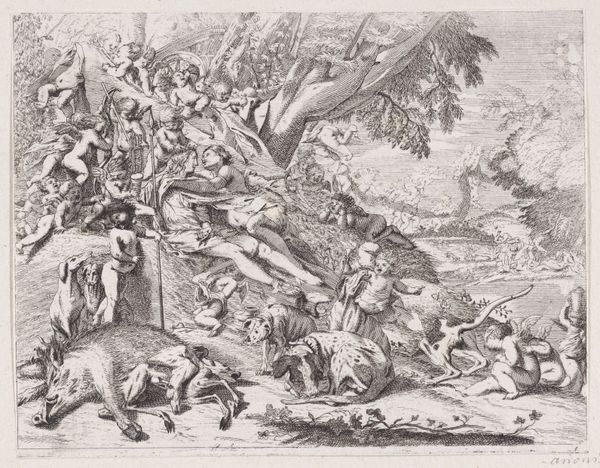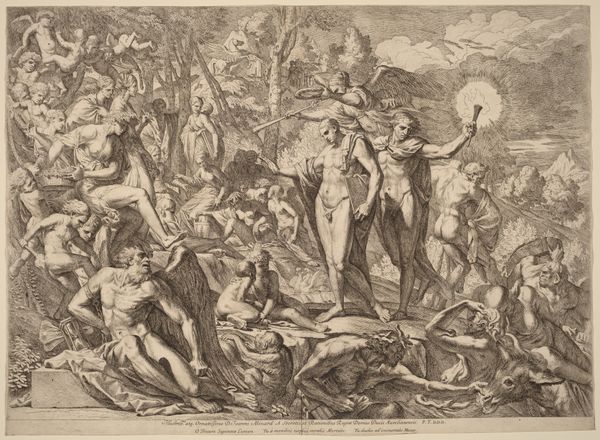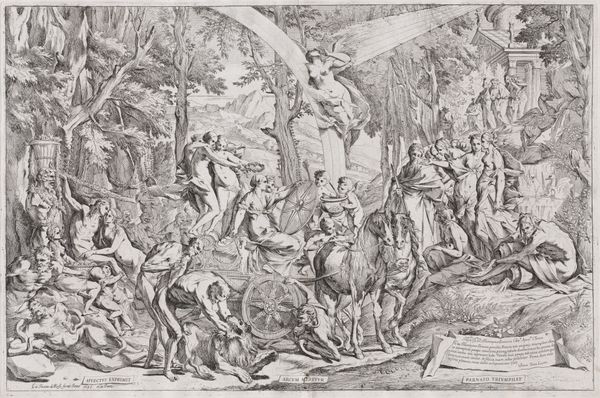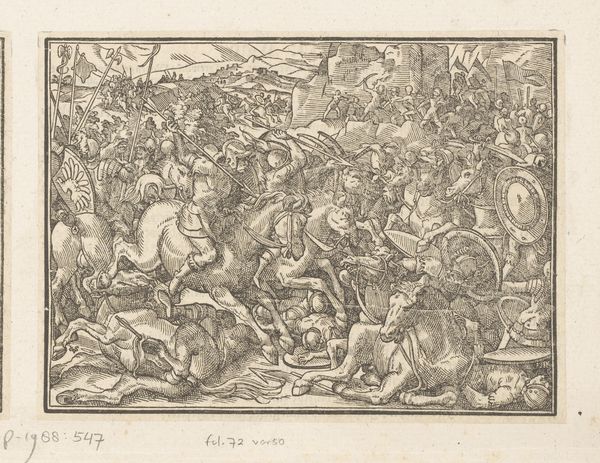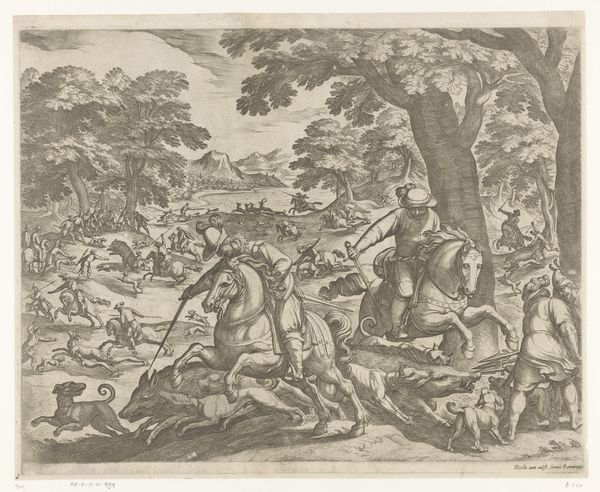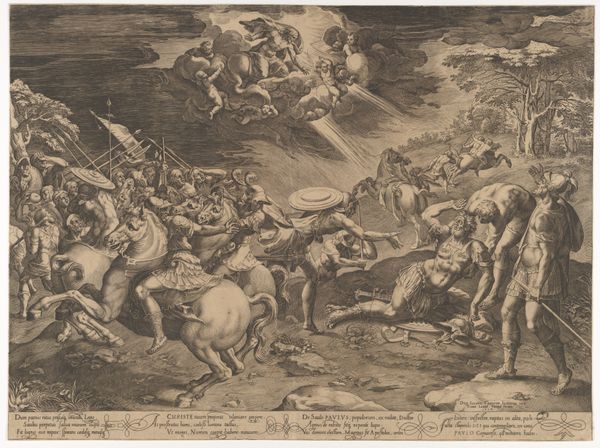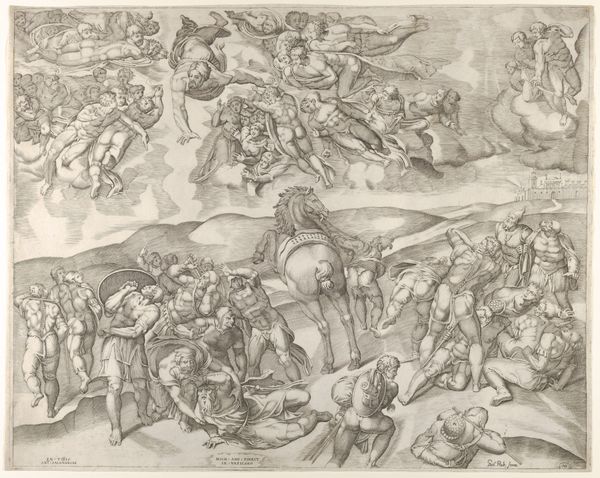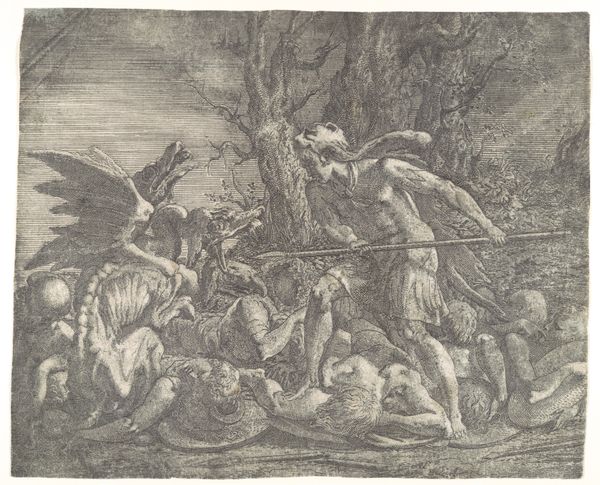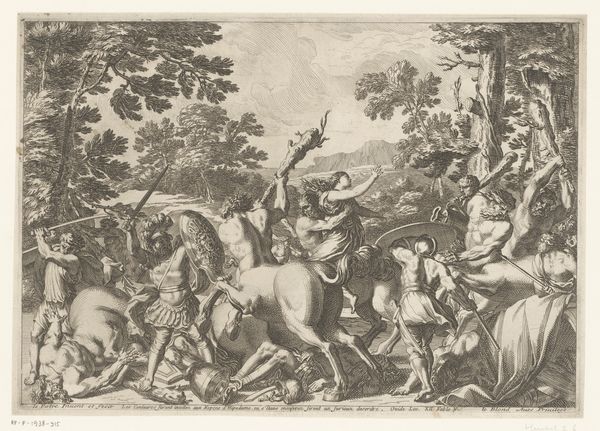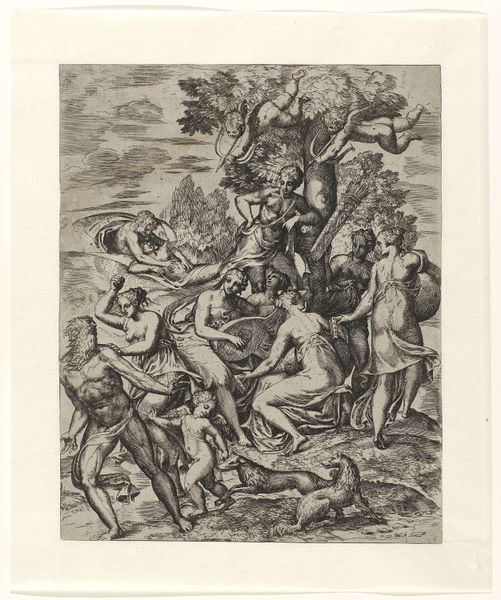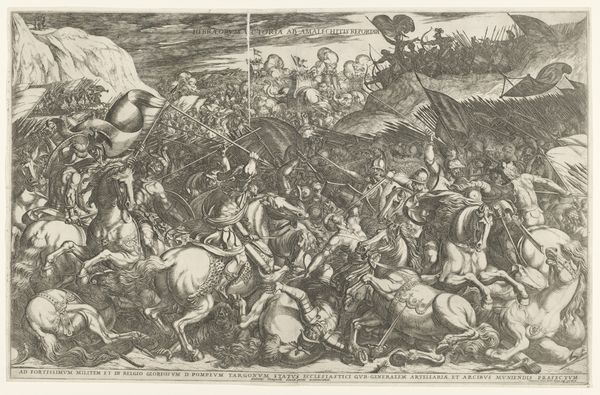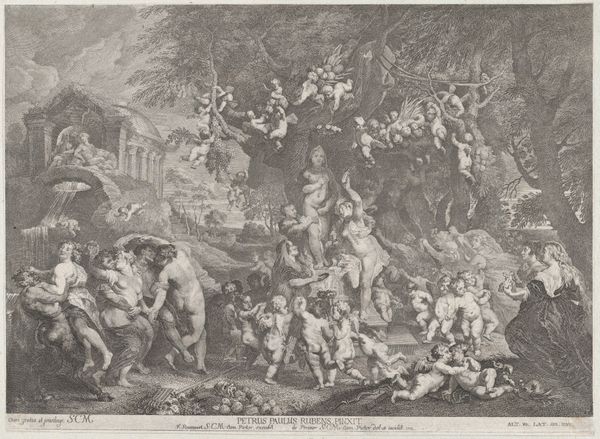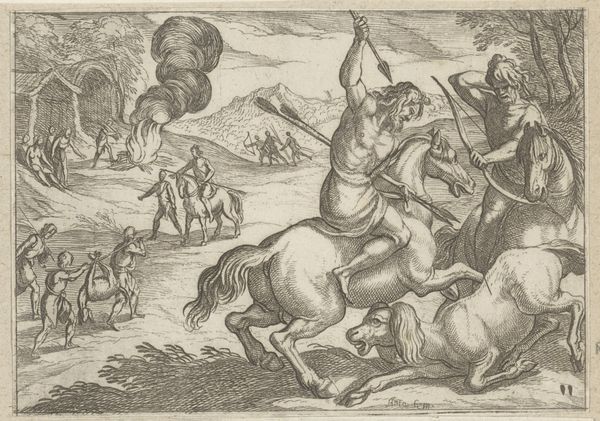
print, etching, ink
#
ink drawing
#
narrative-art
# print
#
pen sketch
#
etching
#
figuration
#
11_renaissance
#
ink
#
history-painting
Dimensions: 218 mm (height) x 227 mm (width) (bladmaal)
Curator: Domenico Campagnola created this etching, titled "Rytterkamp" in 1517, now residing in the collection of the SMK, the National Gallery of Denmark. The piece appears to be printed with ink. Editor: An immediate impression is that this image evokes both dynamism and brutality. Look at that flurry of bodies—human and equine! It’s chaos captured on paper, the frenzy palpable even centuries later. Curator: The socio-political context of the early 16th century in Italy was tumultuous. Venice, where Campagnola was based, was navigating complex alliances and constant threats from larger powers. Scenes of battle, whether real or imagined, held immense appeal to the wealthy merchant class keen to visualize their territories' strength and victories, and who patronized much art at this time. Editor: Yes, and note how classical antiquity heavily influences the depiction. We have near-nude warriors recalling the heroes of the Trojan War, set within what feels like a mythical, timeless woodland, perhaps a space where savagery overtakes civilization. That standard, the banner in the center, almost feels like a Roman vexillum—a sign of their war ethos. Curator: Certainly, the appropriation of classical forms to elevate contemporary narratives was common during the Renaissance. Here, though, the overt display of violence might also be read as a commentary on human nature, especially as rulers expanded territories in northern Italy. Such spectacles normalized these brutal episodes to expand the idea of conquest, dominance, and political propaganda through artistic production. Editor: See how the artist uses line weight, as figures get lost into dark strokes into each other - how do you interpret that visual motif? Does the absence of clarity about what is at stake emphasize a broader sense of inescapable conflict inherent to humans? Curator: It pushes further the chaos you noted initially, but for that very reason, creates legibility through dynamic form; in essence the very lack of definition that evokes such disarray becomes precisely how its artistic ingenuity manifests its power through history as cultural work. Editor: That interpretation allows us a full circle where from formal choices and symbolic deployment, we are still discussing human history centuries later, as a mirror reflection where horror takes the stage to allow space for interpretation through analysis. It is hard to peel one’s eyes away now.
Comments
No comments
Be the first to comment and join the conversation on the ultimate creative platform.
